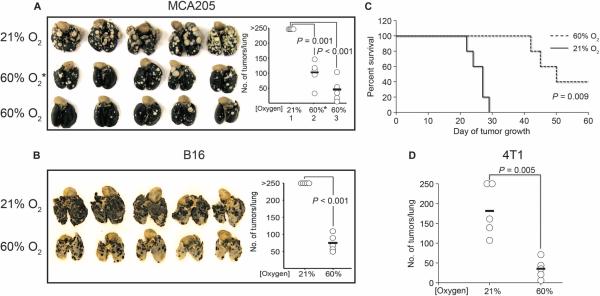Fig. 1. Respiratory hyperoxia promotes tumor regression and survival and decreases metastasis.
(A) Respiratory hyperoxia promotes tumor regression in mice with 11-day established MCA205 pulmonary tumors. Mice were placed in chambers with 60% oxygen after 11 days of tumor growth (identified as 60% O2*; P = 0.001), and lungs were harvested at day 21. Stronger regression was observed when mice were placed in 60% oxygen units immediately after tumor inoculation (identified as 60% O2; P = 0.0003) (n = 5 mice per group, averages represented as horizontal bars). (B) Hyperoxia-enhanced tumor regression in mice with B16 melanoma pulmonary tumors (n = 5 mice per group, averages represented as horizontal bars; P = 0.0001). (C) Respiratory hyperoxia leads to long-term survival in 40% of MCA205 tumor–bearing mice (n =5 mice per group; P = 0.009). (D) Respiratory hyperoxia strongly decreases spontaneous lung metastasis of orthotopically grown 4T1 breast tumors (n = 5 mice per group; P = 0.005). Balb/c mice were injected in the third mammary fat pad with 4T1 tumor cells. After tumors became palpable at day 7, mice were placed in either 21 or 60% oxygen until assay completion on day 28.

